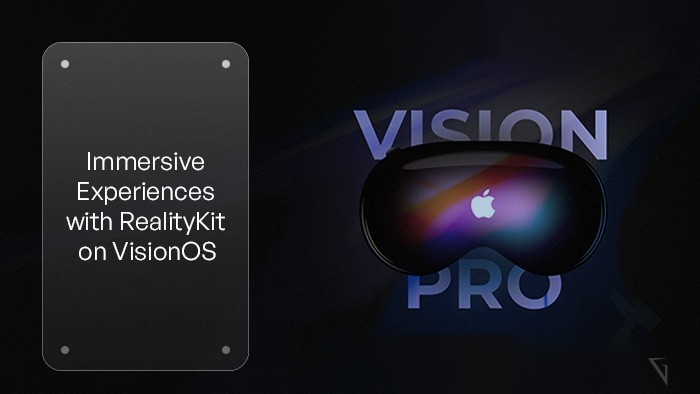

As spatial computing takes center stage with the arrival of visionOS, developers now have the opportunity to create truly immersive experiences on Apple Vision Pro. Leveraging the power of Apple’s RealityKit and its integration with SwiftUI, developers can bring their apps to life with stunning 3D elements, depth, and an infinite canvas. In this blog, we will explore the capabilities of RealityKit and dive into the best practices for building immersive experiences on visionOS.
RealityKit is Apple’s powerful 3D rendering engine designed specifically for visionOS. With its intuitive API and seamless integration with SwiftUI, developers can harness the full potential of 3D graphics and create visually stunning and interactive experiences.
One of the key aspects of building immersive experiences is the thoughtful integration of 3D elements into your app’s interface. Whether it’s augmenting windows with 3D shapes and meshes or displaying objects in the user’s surroundings, 3D elements can enhance user engagement and provide a new level of interactivity. Think about how you can incorporate depth into your app’s windows and when it might be appropriate to add volumes or immersive scenes.
One of the unique features of visionOS is the ability to utilize depth to create powerful moments of immersion. By leveraging the depth capabilities of Apple Vision Pro, you can design interfaces that extend beyond the screen, allowing users to interact with objects in a more natural and intuitive way. Additionally, the infinite canvas feature enables seamless exploration of 3D environments, providing a sense of continuity and freedom within your app.
To create truly memorable experiences, it’s important to consider some best practices for designing immersive interfaces:
With the arrival of visionOS and the power of RealityKit, developers have an incredible opportunity to create immersive and visually captivating experiences on Apple Vision Pro. By incorporating 3D elements into your app’s interface, utilizing depth and the infinite canvas, and following best practices for creating memorable moments of immersion, you can provide users with an unparalleled spatial computing experience. Explore the capabilities of RealityKit, experiment with 3D elements, and let your creativity soar as you build engaging and immersive apps for visionOS.
OpenAI DevDay showcases the latest AI innovations, pushing technology’s boundaries in an ever-evolving landscape.
Explore the top 10 database types for software projects, their unique features, and which one…
Explore PWAs: Your FAQs Guide to Integrating Camera, Geolocation & Device APIs. Harness native features…
General Understanding of PWAs and SEO 1. What is a Progressive Web App (PWA)? A…
Understanding Offline-First Approach Basics 1. What is the concept of "Offline-First" in the context of…
General Overview 1. What are cross-platform frameworks, and how do they relate to Progressive Web…